12 trips from Amman
In the previous article you had a chance to study the complete information about visiting the rock city of Petra, now I would like to focus on other places in Jordan, which may not be as brutally famous as one of the seven wonders of the world, but still worth attention.
We decided to dedicate only the last few hours before our flight to sightseeing in the capital city - Amman. But we ended up spending so much time in traffic that the only real sight we saw was the Roman Amphitheatre. It pays for a Jordan Pass and includes a museum of Jordanian traditions and folklore. If you'd like to spend a longer period of time in Amman, I'd recommend not driving directly into the city centre to avoid wasting time... and nerves in local traffic and finding parking. Now let's get to what you're interested in - the excursions in the area (and a bit further afield)...


1. Madaba
This city is often the first destination tourists choose upon arrival, and we were no exception. It's glued to the southern part of Amman and the drive from the airport takes only half an hour or so. Madaba is nicknamed the city of mosaics, so for archaeology enthusiasts it will be a paradise. You'll find mosaics at every turn: in churches, temples and souvenir shops, where you'll see the tiny stones arranged into furniture, crockery, magnets and lots of other things.
Among the most important sights I would highlight the Byzantine Church of St. George (entrance fee 1 JOD, not valid here) - surprisingly enough ordinary church inside hides a gem in the form of the so-called Madaba map. This is a mosaic on the floor depicting the earliest representation of the Holy Land, it was made in the mid-6th century and its author is unknown. In my opinion, the Madaba Archaeological Park is also worth a visit, with other preserved mosaics. Here you can use your Jordan Pass or pay 3 JOD.
2. Mount Nebo
About 10 km from Madaba is this important pilgrimage site for all Christians. It is here that Moses is said to have led his people after 40 years to see the Promised Land. Mount Nebo is only 817 m high, but you can still enjoy spectacular views of the surrounding landscape. Besides the viewing platform, you can also see the modern Moses Memorial Church with its mosaics, a metal cross, a small museum and olive trees planted by Pope John Paul II in honour of his visit and Pope Benedict XVI as a symbol of peace.
Practical info: it 's easy to get to the entrance by car, parking is free. Unfortunately, the Jordan Pass cannot be used here, so prepare 3 JOD for an adult as an entrance fee.
3. Baptism Site
Al-Maghtas or also Bethany Beyond the Jordan is another important Christian site in Jordan. It is located on the banks of the Jordan River, where John the Baptist recognized the Savior in Jesus and subsequently baptized him. Because of its location near the Israeli border, the Baptism Site was part of military territory for a very long time. Greater archaeological exploration was only possible after the peace treaties of 1995 and the subsequent demining of the area. Today, the remains of churches, monasteries, hermitages and baptismal pools are accessible, and the whole area is even on the UNESCO list of sites.
The Jordan Pass is not valid here, but if you purchase it, you can also buy a Baptism Site pass at a discounted price of 8 JOD. On the spot, a full-price ticket costs 12 JOD.

|
| Source: Jordan Geography - https://jordangeography.com/baptism-site/ |
4. Jerash
An important city of the Near East originally called Gerasa, whose glory was thwarted by an earthquake in 749. The great "rediscovery" did not take place until the early 19th century, when archaeologists took over a very large area full of Roman monuments. Now, thanks to this, Jerash is one of the most frequent trips from Amman... and rightly so.
Practical: to park for free, type Jerash Archaeological Site into google maps. Upon arrival, you'll have to walk through a market with souvenirs and clothes and all sorts before you reach the entrance, where you either show your Jordan Pass or pay 10 JOD. The Old City area is huge, but it's up to you what pace you take, what route you choose and how much time you spend here. Some of the most important buildings are definitely the Colonnade - the main street lined with columns, the monumental Oval Forum with 160 more columns, Hadrian's Arch, the Hippodrome, the theatre or the Temple of Zeus.
5. Dead sea
An experience you can only take away from Jordan or neighbouring Israel - a dip in the saltiest sea in the world! The salinity here is 10 times higher than in the ocean or regular sea, so don't count on any colourful underwater world and coral reefs like in Egypt. In the Dead Sea, nothing much lives or grows. Because of this high salinity, the water is also more dense, which in practical terms means that you can 't even swim in it in the true sense of the word. I'm sure you've seen pictures of people floating on the surface with newspapers spread out, etc... so that's exactly it. Rather, you're just "floating" without the ability to make a real pace with your arms.
Jordan's Dead Sea coast is, with a few exceptions, relatively deserted, so if you want to visit, you basically have two options. Either you stay in one of the hotel resorts located mainly in the northern part, or you stop somewhere along the road and run down to the sea, which, by the way, is a longer and longer journey every year due to the constant drying out. Not to prolong this unnecessarily - we tried both. For one night, I booked theHoliday Inn Resort , a bit unusually for us, for the reason that Nina could at least swim in the hotel pool. The dead sea is not suitable for small children, so beware of that. Moreover, the price was nothing dramatic, we paid €148 for a room with balcony, parking and breakfast. Plus the advantages of the resort: private and gradual entrance to the (tidy) beach, mud for anointing, showers, beach chairs, towel rental all already included in the price.
On the second day we stopped at one of the free accesses located in the southern part. Unfortunately, it's not particularly marked anywhere, so just look for parking and parked cars or small refreshment stands. If you are coming from the north, this particular spot in the photos is just after the turn off to Wadi Mujib - you have to walk a bit to get to the water, but in these parts it is beautifully clear and you can see the salt crystals glistening, unlike the hotel. I also registered a bucket of mud + a primitive shower on the beach. Downside: lots of trash on the way down and at the shore itself.
6. Ma´in
Another tip for lovers of water, this time rather thermal springs. It is a kind of oasis in the mountains where you can get wet under the waterfalls which then flow into the pools. You can visit the thermals with a one-time entrance fee (15 JOD) or you can stay directly at the hotel of the same name, Ma'in, and enjoy the waterfalls without people after closing to the public. It's up to your time.

|
| Source: viator - https://www.viator.com/tours/Amman/Overnight-in-Main-Hot-Springs-from-Amman/d5503-2268P120 |
7. Mukawir (Machaerus)
A palace and desert fortress on top of a hill located about 32 km south of Madaba, where, according to biblical stories, John the Baptist was imprisoned and two years later executed. Mukawir served as a strategic point, as it overlooked a wide area, which would have provided early warning of a possible enemy invasion. However, even so, the fortress was captured and demolished - only the ruins remain.
Practical: you can park just fine where the road ends. It's not a very busy place, so you don't have to worry about any crowds. Admission costs 2 JOD. Plus I personally really liked the actual drive here, because you're basically driving through the desert, with no one anywhere, and just rolling and wrinkled rocks all around you.

|

|
9. Umm ar-Rasas
The archaeological site, which is so valued by experts that it has been inscribed on the UNESCO list of monuments. The artefacts found here prove that three civilisations clashed: the site was founded as a Roman military camp as early as 800 BC, became a Christian centre in Byzantine times and eventually functioned as a centre of early Islam. Now the walls and columns, the beautifully preserved arches and the floor mosaics remain to be seen. You can explore everything at your own pace, just show your Jordan Pass, or pay 3 JOD, parking is free.
10. Keraq
This Crusader castle is located right on the King's highway, so if your travels lead south from Amman, be sure to stop here. The castle is very well preserved, but don't expect any chambers with amenities. There are mainly defensive walls, towers and tunnels. And the best part... thanks to its location at about 1000 m above sea level, the walls offer some really cool views of the surrounding area.
Practical: to enter again use the Jordan Pass, or pay 2 JOD without it. Entrance to the small museum is also included. You can park for free in one of the adjacent streets.
11. Biosferic reservation Dana
The last two trips are already quite far from Amman, so I would recommend to reserve at least one night for both of them. With over 300 km², Dana is the largest nature reserve in Jordan. It attracts especially hikers who enjoy the rocks and canyons. However, admirers of flora and fauna will also find something to enjoy here, as many species of endangered animals (e.g. ibex, caracals, post-larvae) + even some endemic trees and shrubs can be found here.
We had planned to spend the afternoon with some shorter walks, but due to the immense heat we were forced to reconsider the situation. So we at least checked out the views. If you're more fortunate for the weather, stop by the visitor center for information on the various trails. You won't find much on the internet. I'd rather arrange accommodation in advance, because there aren't as many options.
12. Wadi Rum
And the best part in the end... The Valley of the Moon or endless dunes of red sand, sandstone formations of all shapes and sizes, gorges, canyons and countless activities ranging from jeep rides, climbing to hot air ballooning. Wadi Rum has even been a UNESCO World Heritage Site since 2011. And its uniqueness has been noticed by filmmakers, so you may have seen this special landscape in Star Wars, The Martian or Transformers, to name a few.
Practical: I would like to point out right away that you can't drive your own car into the desert, but you have to take a tour. Don't be alarmed, you can arrange practically anything with the local Bedouins, from short desert tours to full day trips with tea parties. The entrance fee will cover your Jordan Pass, or pay 5 JOD/person.
I recommend to spend a night here, so you don't chase yourself unnecessarily, but on the contrary you can soak up the local atmosphere, enjoy the starry sky without light smog and most importantly... to taste the Bedouin zerb - lamb, mutton, chicken, potatoes and vegetables are piled in a wire basket. It is then lowered into the ground, with hot coals at the bottom, and covered with dirt. The food is grilled, stewed, smoked and cooked for 2-3 hours at a time, and then it's just one big YUM! It's the best we've had in Jordan, really.
Accommodation in Wadi Rum - there are a number of options for spending the night in this area, and they are growing. Most of all, of course, it depends on your comfort requirements. However, pay attention to the prices for food and excursions, or transport from Wadi Rum Village, as each campsite has it set up differently. In short, you have to compare a lot. I personally chose Shakria Bedouin Life Camp and for several reasons.
I was convinced by the great reviews, the possibility to drive your own car to the place (i.e. no extra charges for transportation, which most campsites charge) and the comfort of the room in the form of private bathroom and air conditioning. I was worried about the desert temperature fluctuations, where you can warm up during the day, but at night the thermometer can show zero. So for Koblize's sake, just in case... To give you an idea, for a day and night at Shakria Bedouin Life Camp we left about 2 900 CZK for the three of us = a night in a tent, a luxury Bedouin dinner, breakfast, free water and tea anytime, a 2 h jeep tour and half an hour camel ride. Money well spent for us :)
Trip No. 13 is of course Petra, which I have written in a separate article here - How to enjoy visiting Petra. If this information helped you save some time or money or both, you can "invite me for a coffee" and contribute to the running of Travel with donuts :) account number / QR code: 1257951017/3030

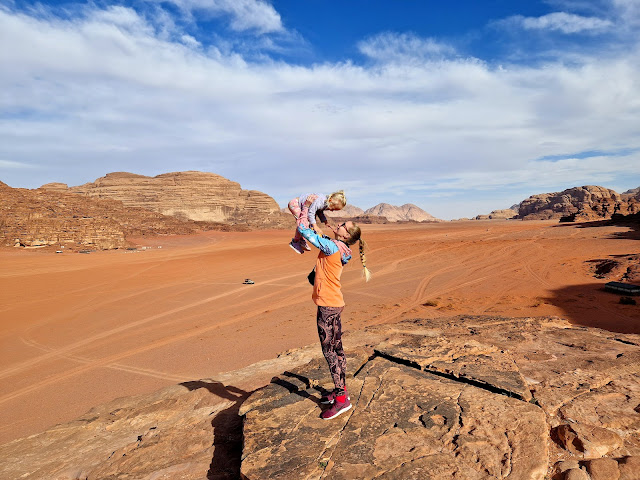












































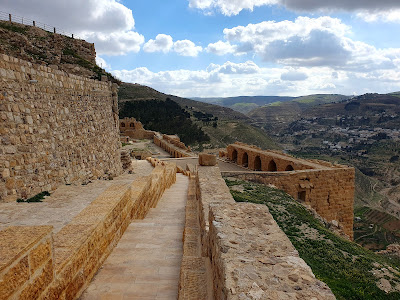


















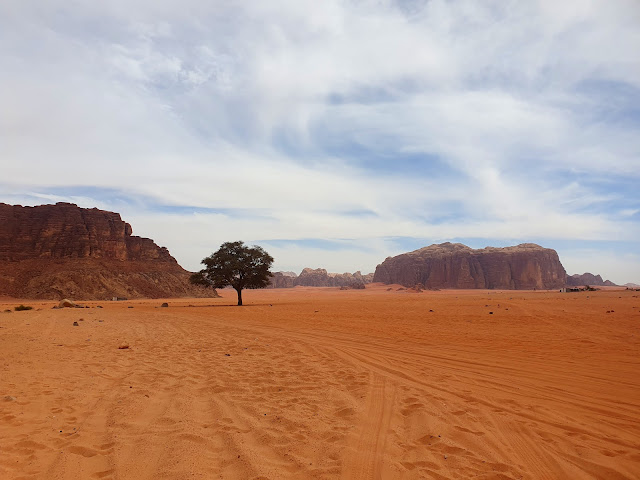





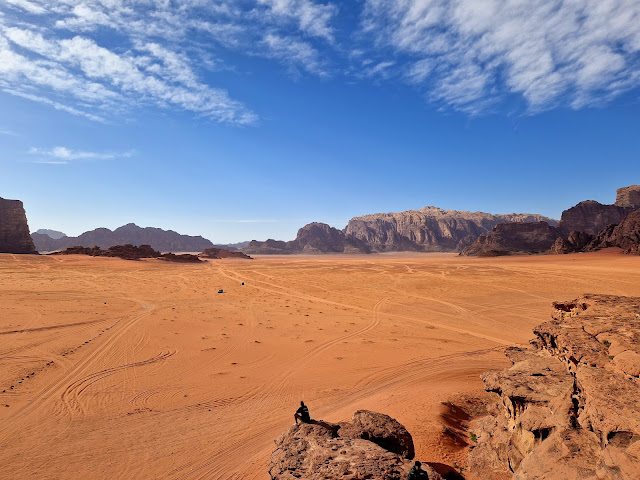








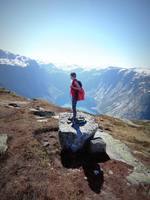





Žádné komentáře: